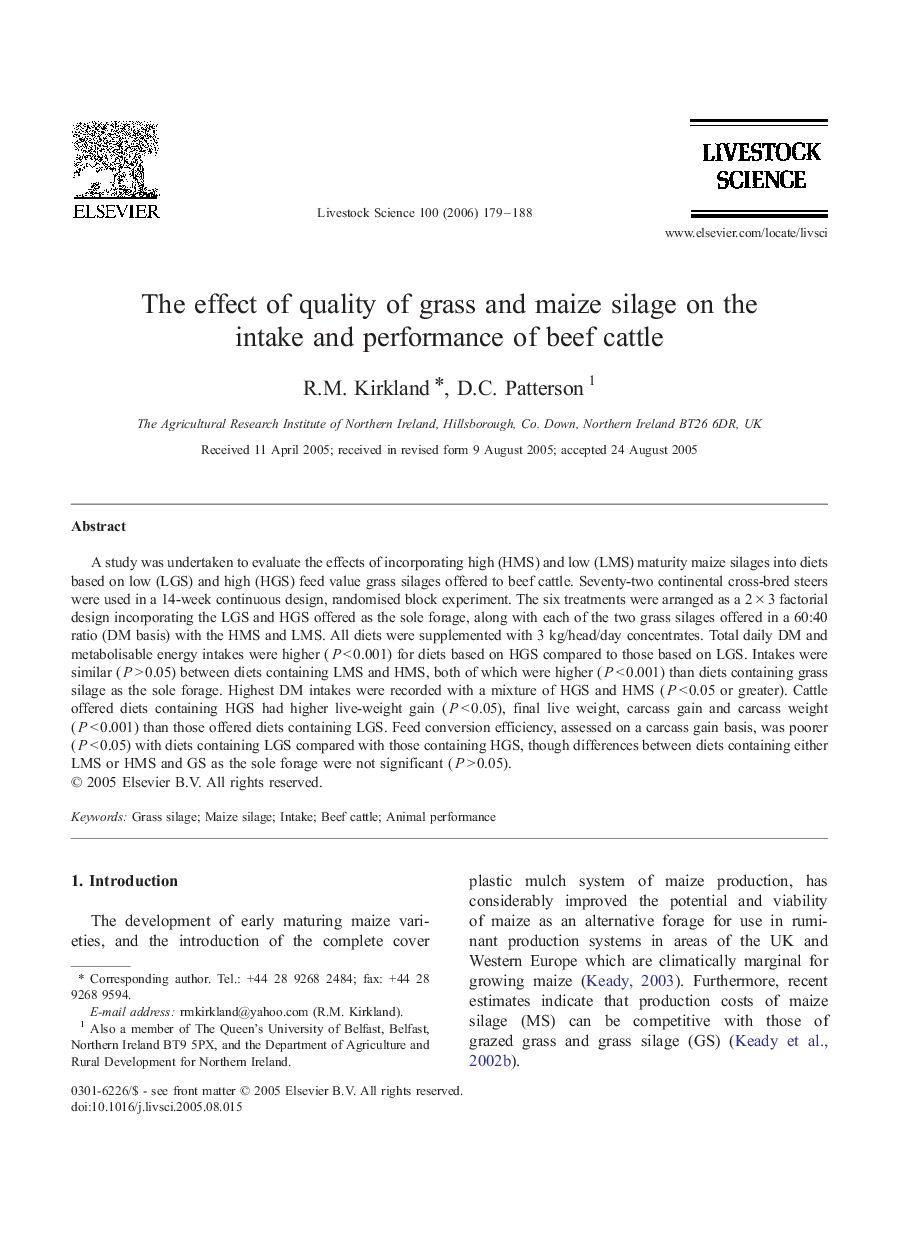| Article ID | Journal | Published Year | Pages | File Type |
|---|---|---|---|---|
| 2449158 | Livestock Science | 2006 | 10 Pages |
A study was undertaken to evaluate the effects of incorporating high (HMS) and low (LMS) maturity maize silages into diets based on low (LGS) and high (HGS) feed value grass silages offered to beef cattle. Seventy-two continental cross-bred steers were used in a 14-week continuous design, randomised block experiment. The six treatments were arranged as a 2 × 3 factorial design incorporating the LGS and HGS offered as the sole forage, along with each of the two grass silages offered in a 60:40 ratio (DM basis) with the HMS and LMS. All diets were supplemented with 3 kg/head/day concentrates. Total daily DM and metabolisable energy intakes were higher (P < 0.001) for diets based on HGS compared to those based on LGS. Intakes were similar (P > 0.05) between diets containing LMS and HMS, both of which were higher (P < 0.001) than diets containing grass silage as the sole forage. Highest DM intakes were recorded with a mixture of HGS and HMS (P < 0.05 or greater). Cattle offered diets containing HGS had higher live-weight gain (P < 0.05), final live weight, carcass gain and carcass weight (P < 0.001) than those offered diets containing LGS. Feed conversion efficiency, assessed on a carcass gain basis, was poorer (P < 0.05) with diets containing LGS compared with those containing HGS, though differences between diets containing either LMS or HMS and GS as the sole forage were not significant (P > 0.05).
